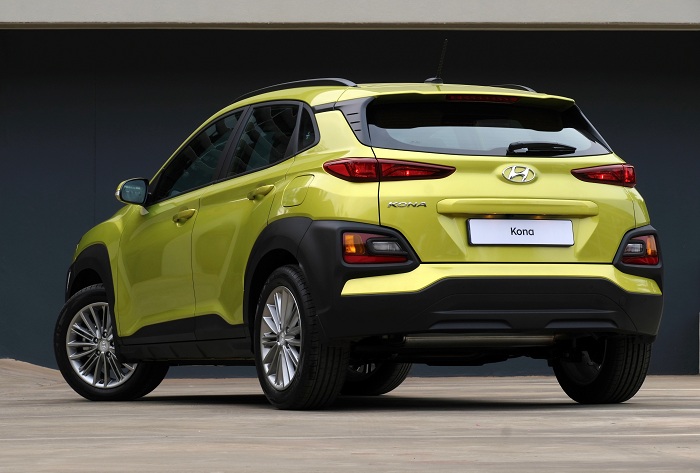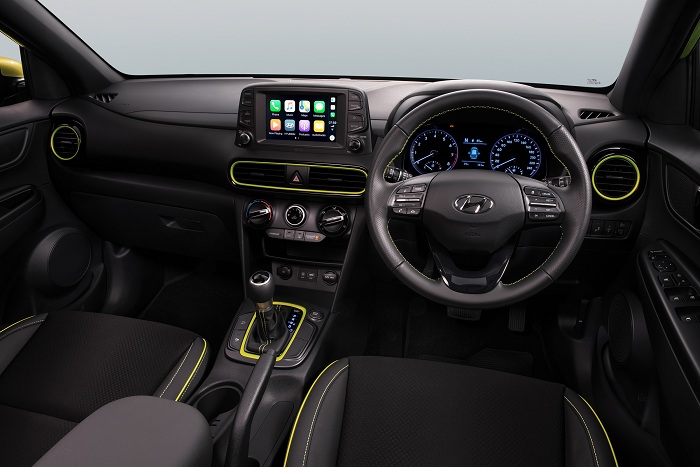Looking controversial?
On the face of it, the Kona looks more muscular and unlike most small crossovers it rivals, not like a slightly beefed up hatchback. Boasting a more aggressive rendition of Hyundai’s Cascading grille complete with two-tier headlight setup, which sees the slim LEDs placed below the bonnet line, the Kona looks futuristic and is guaranteed to stand out from whether you like it or not.

With a few nods to the i20, the Kona’s rear facia is less controversial, but overall, it looks thoroughly modern with a good helping of funkiness lobbed-in, aspects you don’t often associate with the Hyundai brand.
Functional interior still a winner
Although far less radical than its exterior, the Kona’s interior appears well executed with an uncluttered look, mostly attributed to the majority of the various functions being located on the freestanding seven-touch touchscreen infotainment system that boasts Bluetooth, Apple CarPlay and Android Auto.
While generally well-put together with soft-touch materials, I did find some the plastics lower down, especially around the transmission tunnel and on the door card, to be of a cheap feeling nature. Offsetting this to a degree though, was the red accents around the air vents, on the seats and gear lever that matched the exterior hue.

In spite of its compact proportions, space inside is ample though the boot appears small at 361-litres, although this be enlarged to 544-litres with the rear seats folded flat. Upfront though, I was comfortable and rear legroom is sufficient, though the door pockets came across as rather small.
An engine wanting to impress
As for the drive, the Kona that I drove came powered by Hyundai’s 1.0-litre T-GDI turbocharged three-cylinder petrol engine, a first for the automaker in South Africa. Producing 88kW/172Nm, the assisted triple is teamed to a six-speed manual gearbox, a combination that works fantastic with the ‘box being in spite of the engine being slick and light, though I did notice a bit of turbo-lag on pull away, which become rather annoying at times.
I also took the Kona out of its comfort zone during its stay, and although it will almost never leave the black stuff, the rutted, bumpy gravel route I took it on presented nothing much of a challenge. With a ground clearance of 170mm, the Kona offers a comfortable ride and thanks to its hatchback like proportions, it is easy to live with, park and maintain. It is also fairly economical as it returned an average consumption of around 6.2-litres/100km, bettering Hyundai’s claim by 0.4-litres/100km
Verdict
Overall, I was left impressed by the Kona and can say that it makes for a highly recommendable entrant into a segment that seems to becoming more crowded with every passing day.
Granted, while the interior fit-and-finish rates as a mixed bag, the Kona, given Hyundai’s now established reputation, it guaranteed to be a success given the inclusion of the brand’s five year/150 000km warranty that can be extended to two years/50 000km, as well as five year/90 000km service plan and sticker price of R379 900.
NOTE: Kona 2.0 Executive AT pictured
















